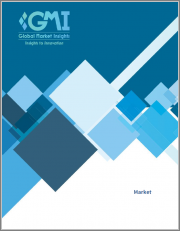
SAARC(남아시아 지역협력연합)의 송전선 시장 규모는 전체적인 인프라 정비를 위한 정부투자 증가에 견인되어 2023년부터 2032년에 걸쳐 CAGR 7.5% 이상으로 확대할 전망입니다.
SAARC 국가들이 인프라 전반의 강화에 주력하게 됨으로써, 송전망의 근대화와 확장을 향한 대규모 투자에 박차가 걸리고 있습니다. 또한, 국경과 지역을 넘어서는 신뢰성 있고 효율적인 에너지 수송의 필요성이 첨단 송전선로에 대한 수요를 끌어올리고 있습니다.
또한 일부 정부는 인프라 프로젝트를 가속화하기 위해 지역 연결성과 경제 협력을 강화하기 위해 노력하고 있습니다. 예를 들어, 2023년 7월, KEC International Ltd.는 SAARC 지역의 신호 및 통신 프로젝트에서 최초의 국제 주문을 수행했습니다. 신재생에너지원의 추진도 신재생에너지가 풍부한 지역을 연결하는 송전 인프라의 개발을 필요로 하여 업계 전망을 강화하고 있습니다.
SAARC(남아시아 지역 협력 연합) 송전선 시장은 전압, 도체, 국가로 구분됩니다.
전압별로는 보다 효율적이고 장거리 송전을 가능하게 하기 위해, 보다 높은 전압 용량으로의 시프트가 진행되고 있기 때문에 2023년부터 2032년에 걸쳐 660kV 부문에 의한 산업 가치가 크게 늘어날 것으로 보입니다. 660 kV 송전선은 송전 손실을 최소화하고 성장하는 도시 지역의 에너지 수요 증가에 대응하기 위해 선호됩니다. 여러 국가가 전력 인프라의 현대화에 투자하고 있기 때문에이 분야는 큰 수익을 올릴 것으로 보입니다.
도체별로 기존 부문의 SAARC(남아시아 지역 협력 연합) 송전선 시장 규모는 2023년부터 2032년에 걸쳐 강력한 성장을 기록할 것입니다. 알루미늄과 강철과 같은 전통적인 도체는 입증된 신뢰성과 비용 효율성으로 높은 채용률을 보여줍니다. SAARC 국가들이 송전망을 확대하고 있기 때문에 종래의 도체에 대한 수요는 기술의 진보에 직면하여 뿌리 깊다. 또한 지역 전체의 에너지 수요 증가에 대응하기 위해 인프라 정비에 대한 관심이 높아지고 있는 것도 이 부문의 성장을 뒷받침하고 있습니다.
국가별로는 방글라데시의 송전선산업이 강력한 경제발전과 도시화로 인한 에너지 수요 증가로 2032년까지 견조한 성장률을 보일 것으로 보입니다. 지역의 연결성과 국경을 넘는 전력거래를 강화하는 정부의 이니셔티브도 시장 성장에 기여하고 있습니다. 예를 들어 방글라데시는 2022년 2월 네팔에서 전력 수입을 위한 새로운 경로를 개설할 계획을 발표했습니다. 히말라야의 나라가 서쪽 벵골주와의 국경을 넘은 송전 접속의 건설에 합의했기 때문입니다. 게다가 신재생에너지원에 대한 노력은 견고한 송전선로의 개척을 더욱 필요로 하고 지역시장의 확대를 뒷받침하고 있습니다.
SAARC Transmission Lines Market size is poised to expand at over 7.5% CAGR from 2023 to 2032 driven by the increasing government investments for overall infrastructure development. The rising focus of SAARC nations on enhancing their overall infrastructure is spurring significant investments directed towards the modernization and expansion of power transmission networks. In addition, the need for reliable and efficient energy transfer across borders and regions is boosting the demand for advanced transmission lines.
Furthermore, several governments are committed towards enhancing regional connectivity and economic collaboration to accelerate the infrastructure projects. For instance, in July 2023, KEC International Ltd. received its first international order for a signaling and telecommunication project in the SAARC area. The push for renewable energy sources is also necessitating the development of transmission infrastructure to connect renewable energy-rich areas, augmenting the industry outlook.
The SAARC transmission lines market is segmented into voltage, conductor, and country.
Based on voltage, the industry value from the >660 kV segment is set to gain considerable traction from 2023-2032 owing to the ongoing shift towards higher voltage capacity for enabling more efficient and long-distance electricity transmission. The 660 kV lines are also preferred for minimizing transmission losses and accommodating the rising energy requirements of growing urban centers. With multiple countries investing in modernizing their power infrastructure, the segment is likely to generate substantial revenue.
In terms of conductor, the SAARC transmission lines market size from the conventional segment may record robust growth between 2023 and 2032. Traditional conductors, such as aluminum and steel are witnessing higher adoption due to their proven reliability and cost-effectiveness. Due to SAARC nations expanding their power transmission networks, the demand for conventional conductors is persistent in the face of technological advancements. Additionally, the increasing focus on immediate infrastructure development to meet the escalating energy demands across the region will support the segment growth.
With respect to country, Bangladesh SAARC transmission lines industry is poised to exhibit a robust growth rate through 2032 owing to the increasing energy demand driven by strong economic development and urbanization. Government initiatives to enhance regional connectivity and cross-border power trade are also contributing to the market growth. For instance, in February 2022, Bangladesh announced plans to open a new route for importing power from Nepal, as the Himalayan nation agreed to build a cross-border electrical transmission connection with West Bengal. Moreover, the commitment to renewable energy sources is further necessitating the development of robust transmission lines, thereby propelling the regional market expansion.